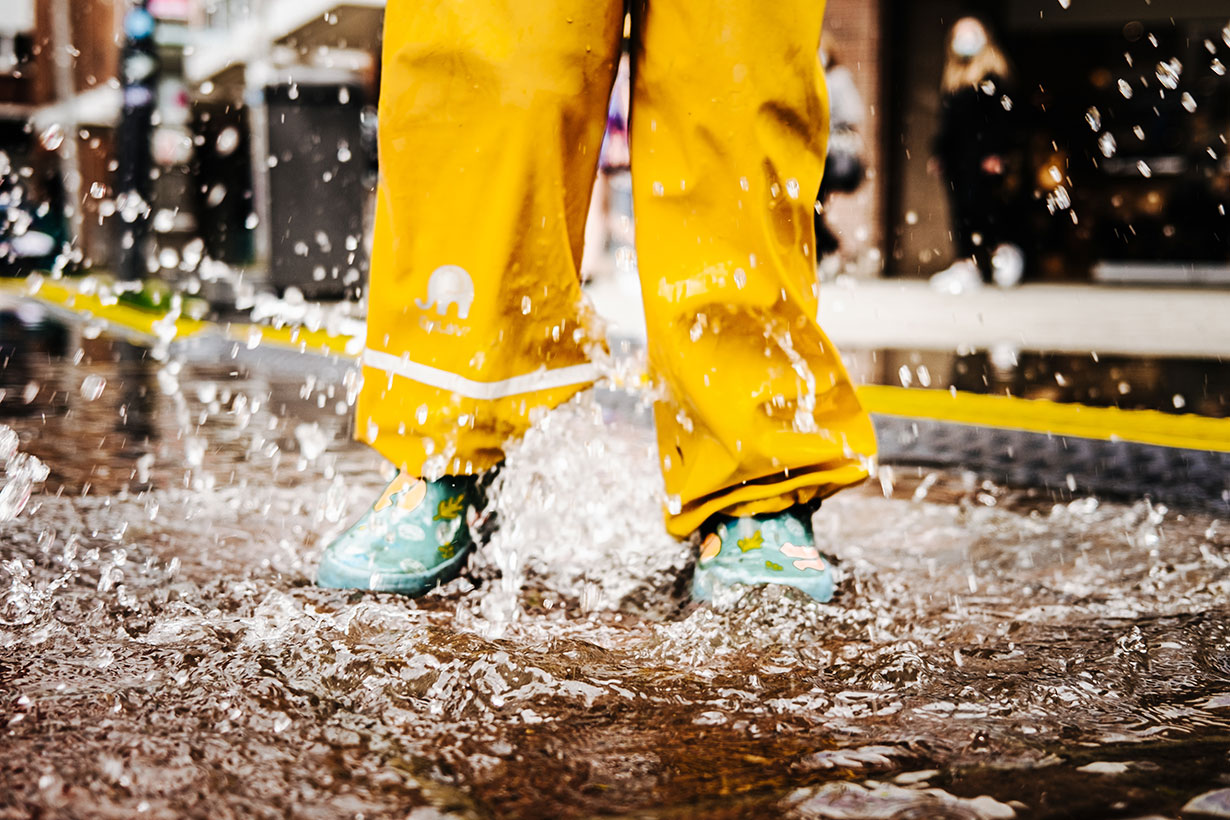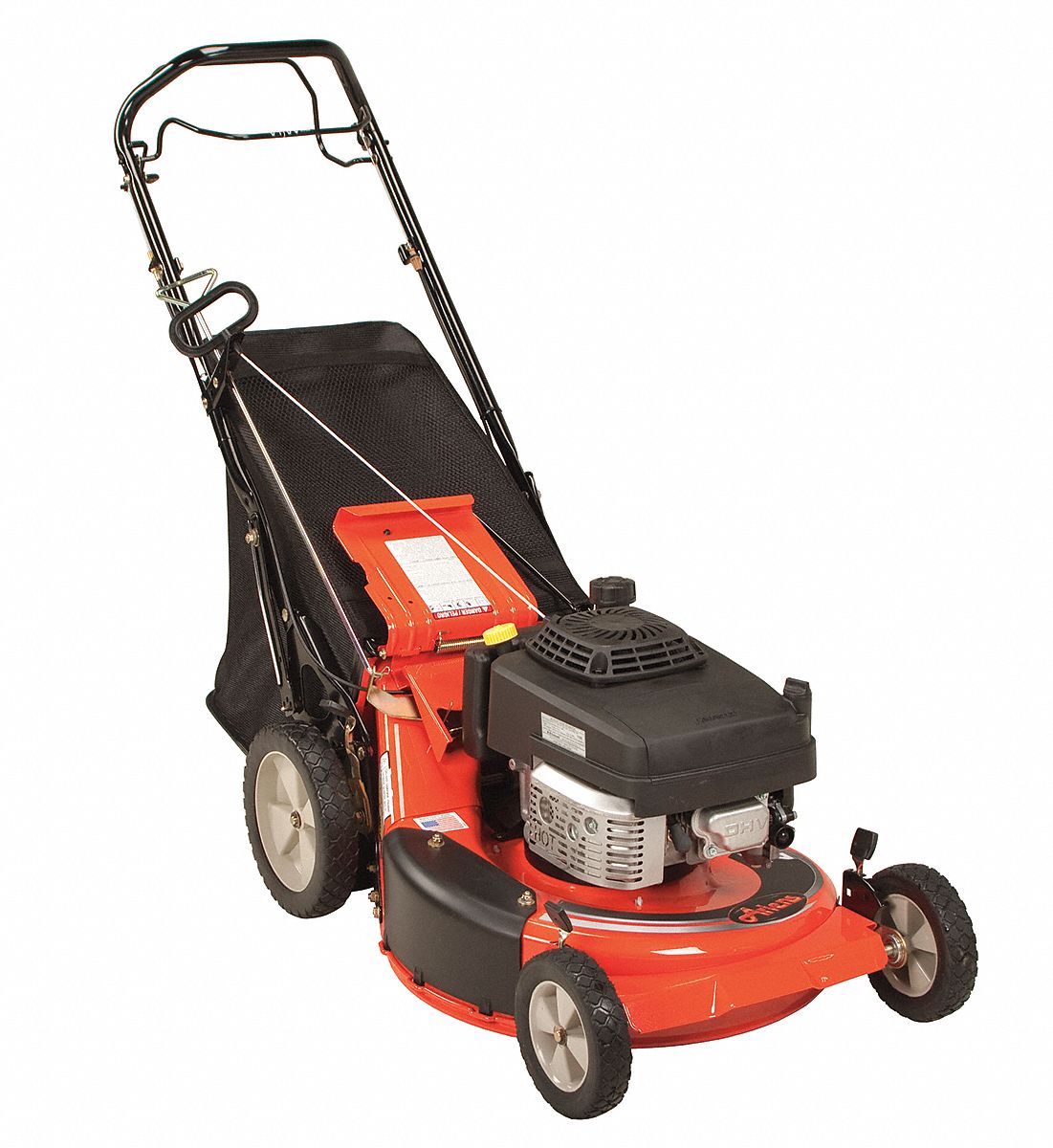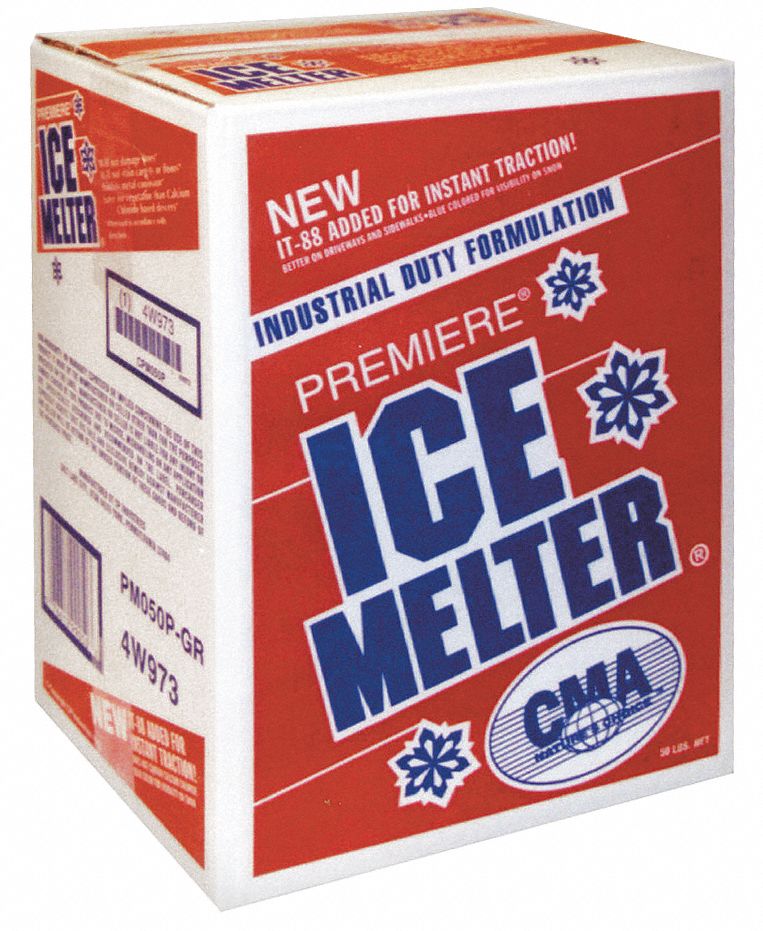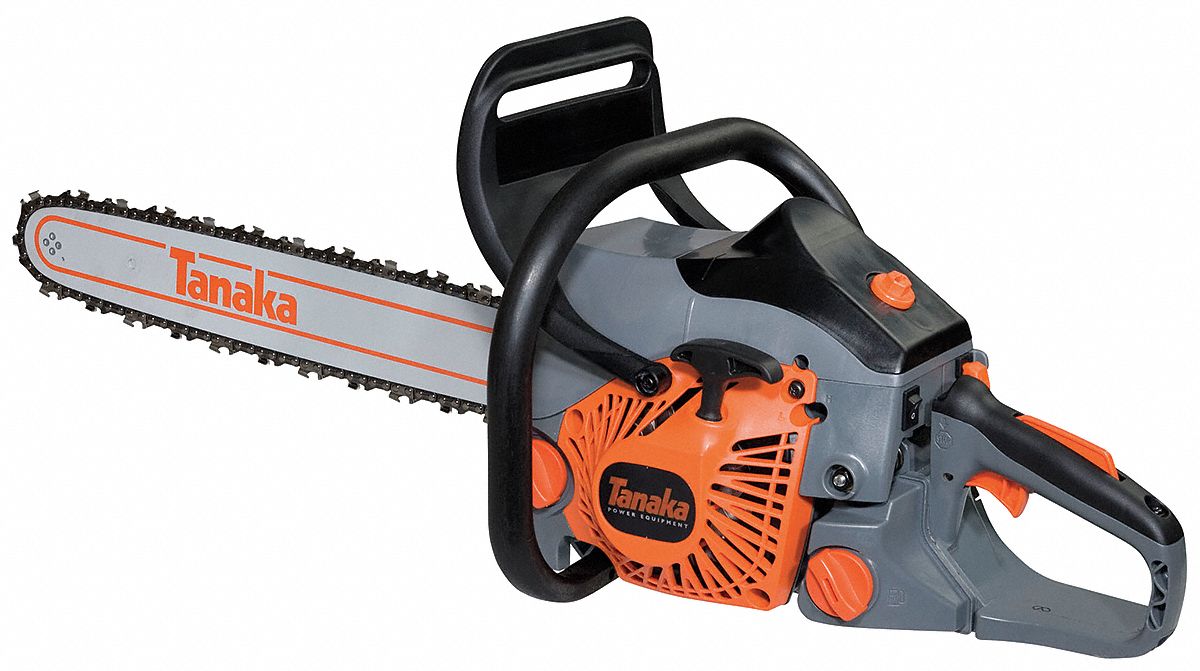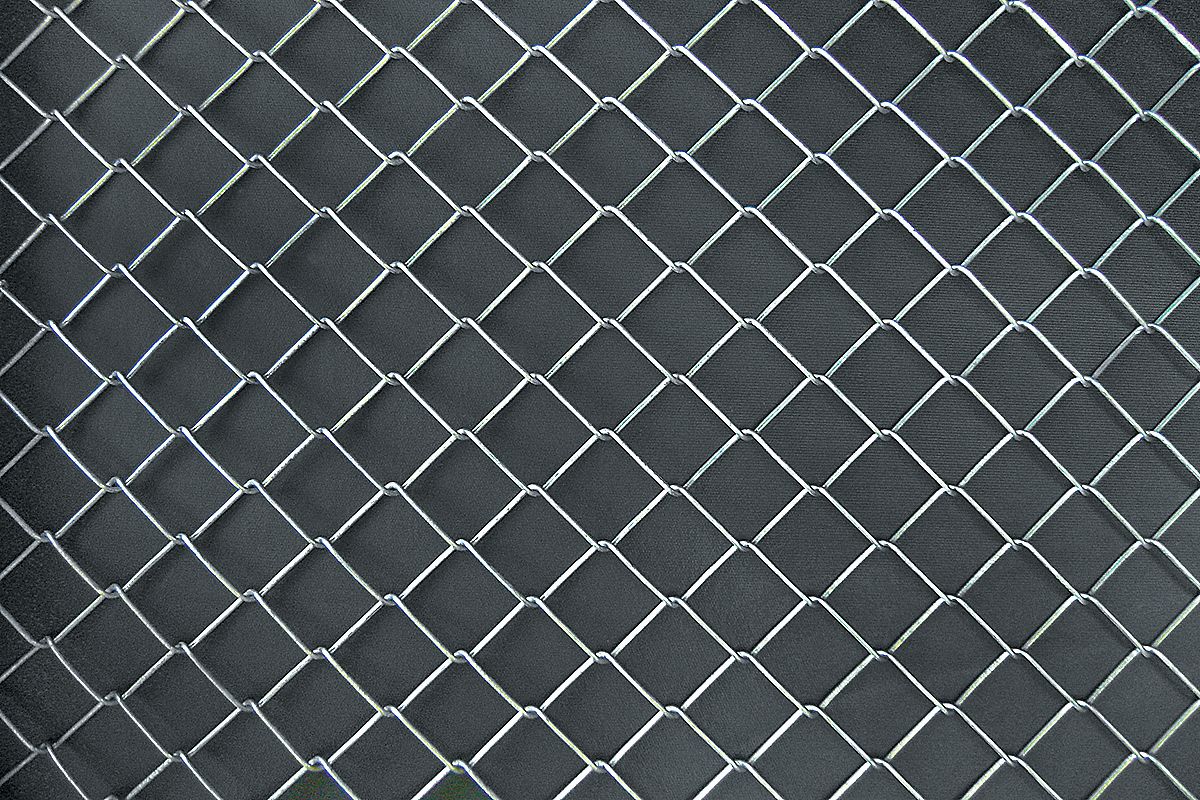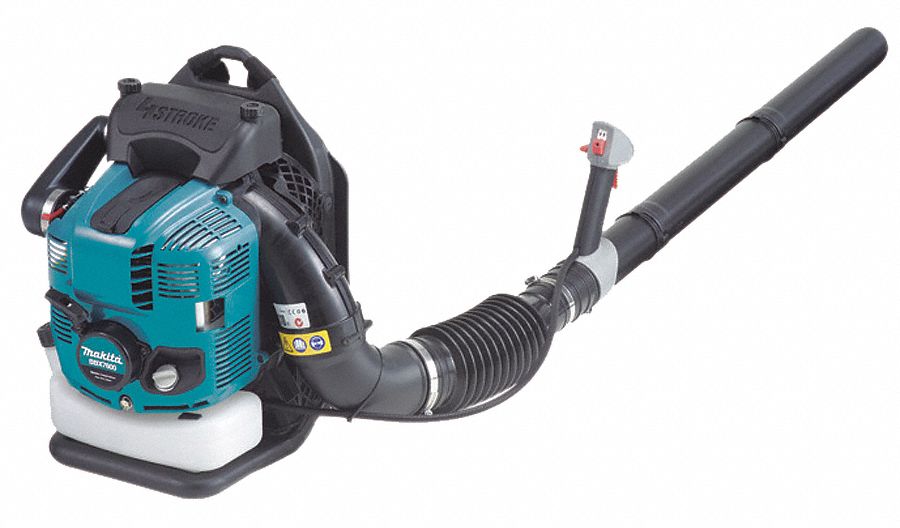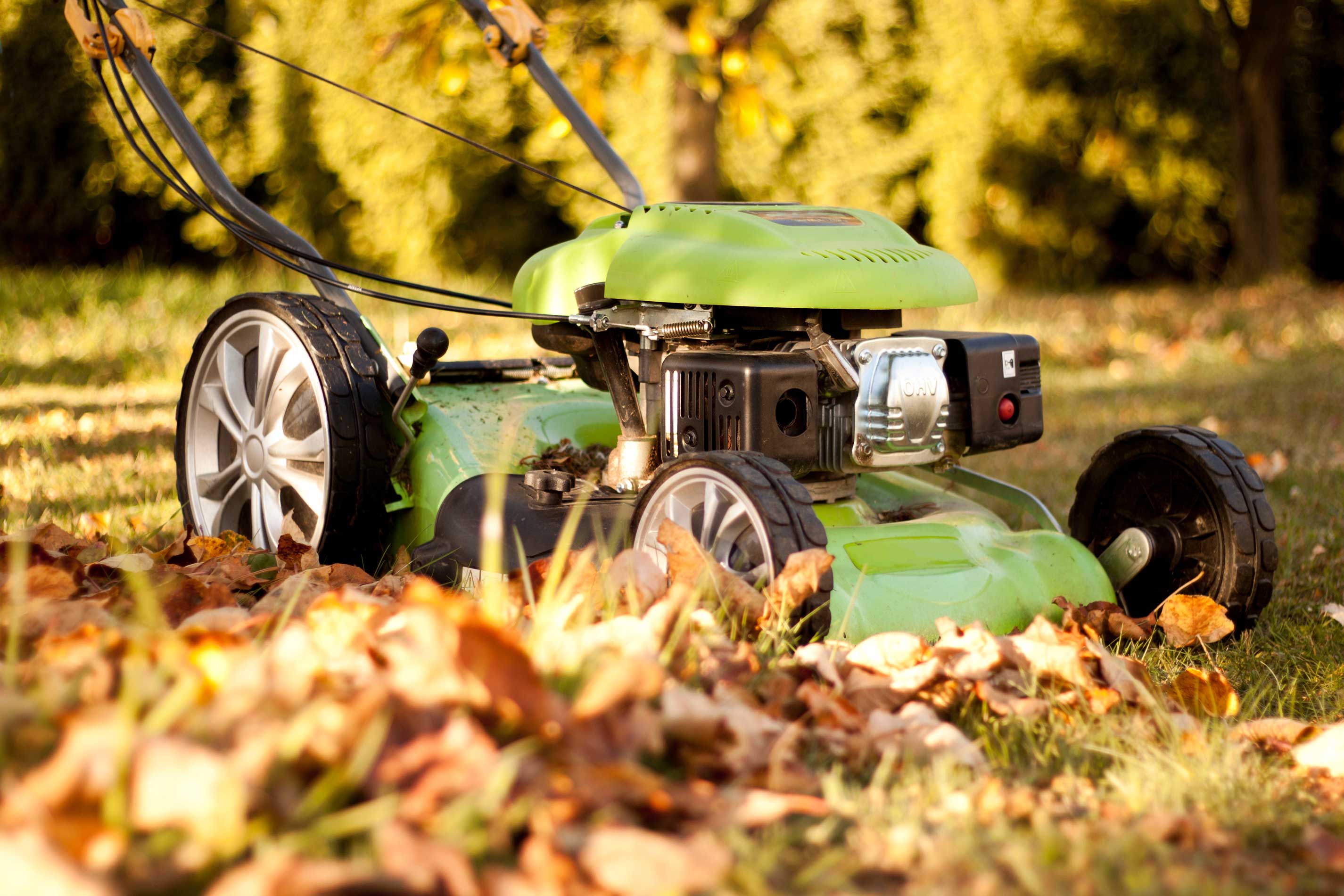

10 Tips for Winterizing Lawn Mowers & Outdoor Power Equipment
By Grainger Editorial Staff 11/10/22


Falling temperatures often signal it’s time to perform preventive maintenance on your outdoor power equipment before storing them away for the long winter. Winterizing gas-powered outdoor equipment in preparation for cold weather can help prevent corrosion, deterioration and extend engine life. It also provides a good chance to deal with common wear and tear or damage that may have happened over the spring and summer months. Find out how to get your lawn mower, string trimmer and other outdoor power tools ready for winter storage.
How to Winterize Tools by Engine Type
The winterization process is different for equipment with two-stroke and four-stroke engines, so it’s important to know your engine type to ensure proper maintenance. Two-stroke engines use a mixture of gasoline and oil, so oil changes aren’t needed. However, any equipment with a four-stroke engine uses engine oil that should be routinely changed. Always read the owner’s manual for the manufacturer’s maintenance recommendations before storing your equipment.
Examples of Two-Stroke Outdoor Equipment
- String trimmers
- Hedge trimmers
- Chainsaws
- Leaf blowers
Examples of Four-Stroke Outdoor Equipment
- Walk-behind lawn mowers
- Riding lawn tractors
- Pressure washers
- Tillers
Follow these tips to help prepare and safely store your gas-powered equipment over winter.
1. Clean and Inspect Equipment
Make sure the equipment won’t start by disconnecting the battery. Then use a brush and a hose to clean away any debris. While cleaning, check all equipment parts thoroughly and inspect the body for loose screws or bolts. If you find any damage, it’s a good idea to have it fixed before the equipment is stored for several months. Always ensure the equipment is clean and dry before storing it in a shed or garage. Leaving corrosive materials on your mower or trimming blades can cause rust over the winter.
2. Empty or Stabilize Fuel
Fluctuating temperatures can cause gas to separate if left unused. Separating fuel can lead to water and rust accumulating and the engine failing or running roughly when starting up equipment in the spring. There are two options for dealing with leftover gas in outdoor equipment: empty the fuel tank or use a stabilizer, then fill the tank with fresh gas. After adding the stabilizer, make sure to top off the fuel level and run the equipment for a few minutes to work the stabilizer through the engine lines. For larger equipment like diesel-powered tractors, it’s recommended to keep stabilized fuel in the tank and run the equipment about once a month to help prevent condensation over winter. Winterization steps vary depending on whether your equipment is gas- or diesel-powered and where it’s stored, so when in doubt, it’s always best to check the owner’s manual or contact the manufacturer.
3. Change Oil
Running an engine with dirty or low oil can shorten the engine life or cause the engine to seize up permanently. Always check the oil level before starting up your tools. Although oil in a lawn mower won’t separate or go bad over the winter, it’s still something you should change at least once per year or after 50 hours of run time. Make sure to use the exact type of motor oil recommended by the manufacturer.
4. Change Fuel Filters
Every gas-powered piece of equipment has a fuel filter. Fuel filters help keep engines running smoothly by helping remove foreign particles from gas. A dirty fuel filter can lower fuel efficiency and make the engine difficult to start. Replacing both filters at least once per year can help improve performance and extend the lifespan of a tool.
5. Clean and Inspect Spark Plugs
An engine won’t run smoothly if a spark plug is worn down, dirty or damaged. Before starting up an engine, remove and inspect the spark plug. Use a brush to clean off the area around the spark plug and replace it if you notice any damage.
6. Replace Air Filters
Gas-powered lawn equipment can create dust and dirt that can be sucked back into the engine, resulting in problems like poor fuel efficiency, difficulty starting, running and shorter engine life. Installing a new air filter each season can help improve performance and increase the equipment’s lifespan.
7. Lubricate Hinges and Moving Parts
Poorly lubricated joints and parts can wear out quickly or stop functioning completely. Check the owner’s manual to find the location of your equipment’s grease fittings. Then use a grease gun to carefully lubricate each fitting.
8. Sharpen or Replace Blades
Consider sharpening your lawn mower blades and other equipment before storage. Some manufacturers recommend sharpening mower blades every 25 hours of regular use. This will help ensure your tool blades will cut smoothly again next year. If your tool starts cutting unevenly, it is usually a sign to replace the blades. Specialty sharpening tools are required for equipment like chainsaws and hedge trimmers.
9. Remove Batteries
Lawn mower, tractor and power tool batteries can die or lose power after sitting unused all winter. Although you can often recharge a dead battery, you’ll need to replace it if that doesn’t work. Removing your batteries at the end of the season before storing them indoors is often the best way to extend the battery’s life. The optimal temperature for storing batteries is around 59 degrees Fahrenheit. Disconnecting the battery and moving it to a dry and temperate environment will ensure that it’s ready to use again in the spring without needing to be replaced or recharged. If you decide not to remove your battery over the winter, using a portable smart charger can help maintain battery life in your lawn mower, tractors and other equipment when not in use.
10. Cover and Protect Equipment
Make sure to tightly cover any outdoor equipment you can’t store inside a garage or shed with a tarp to help prevent damage and corrosion over the winter months. Use stakes and cords to help secure the tarp and keep it in place to help protect outdoor equipment from the elements. It’s also a good practice to remove gasket seals from the equipment you won’t use over the winter to prevent them from breaking in the cold.
Colder temperatures can cause fuel and other fluids in your outdoor power equipment to freeze, damaging the internal components of your equipment. For this reason, it’s better to store power tools and equipment indoors or in a garage or shed during the winter, whenever possible. If you don’t live in a cold area, your outdoor equipment may still be exposed to heavy rains, which can rust metal parts. Taking the time to perform simple maintenance before storing your outdoor power equipment can help ensure a smooth start in the spring.
Frequently Asked Questions
Q: What does it mean to fog an engine?
A: Fogging oil helps coat internal engine components with oil to help prevent rust. Applying fogging oil before storage is often recommended for different types of lawn equipment, including chainsaws, snowblowers, portable generators, hand-held power equipment and more. However, fogging isn’t recommended for all engines, like diesel. Always check the label first and follow manufacturer instructions to see if your engine requires oil fogging before storage.
Q: Is it better to drain gas or use a stabilizer before winter storage?
A: There is an ongoing debate about whether it’s better to drain gas or use a stabilizer since most gas now contains 10 percent ethanol, which can damage an engine’s fuel system. Although manufacturers often recommend emptying the fuel tank to winterize a lawn mower and other tools, some experts believe routinely emptying the fuel tank of some equipment can damage internal parts and possibly shorten the lifespan. Using fresh fuel and a quality fuel stabilizer before storage is an easy way to help ensure your equipment will be ready to run in the spring. However, it’s always best to consult the owner’s manual for the recommended practices based on the type of equipment.

Safety Management
6 Tips to Help Prevent Slips, Trips and Falls
Identify the fall hazards in your workplace and implement a fall safety program. Check out these tips from Grainger so you can mitigate risk.
![]() Our Latest KnowHow
Our Latest KnowHow

Facility Pest Control: How IPM Helps Safely Manage Insects
Discover safe, compliant pest control with IPM. Find tips for insect monitoring, sanitation and safe insecticide use in commercial facilities.
The information contained in this article is intended for general information purposes only and is based on information available as of the initial date of publication. No representation is made that the information or references are complete or remain current. This article is not a substitute for review of current applicable government regulations, industry standards, or other standards specific to your business and/or activities and should not be construed as legal advice or opinion. Readers with specific questions should refer to the applicable standards or consult with an attorney.


